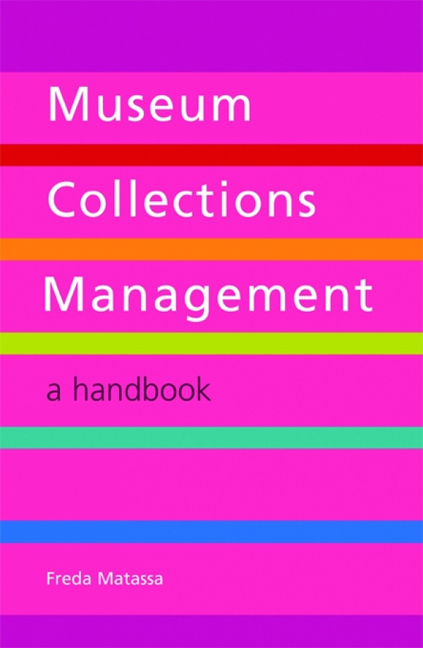10 - Exhibitions and displays
from Part 2 - Collections management: processes
Published online by Cambridge University Press: 08 June 2018
Summary
Fundamentals
Exhibition and display are perhaps the most crucial means of access to and enjoyment of our cultural history. They are an essential part of owning and caring for cultural collections and allowing them to be seen to their best advantage. Knowing how and when to display objects so that they can be easily accessible is an important skill. However, knowledge of best practice in handling and display methods is critical to ensuring the safety and security of items at all times. For public bodies, exhibiting as much of their collection as possible is a civic duty. For private owners, good display, safely managed and with no risk to the exhibits, contributes to the longevity of their collections.
Displays, whether of permanent collections, temporary exhibitions or privately owned objects, all follow the same rules for careful handling, good environmental conditions and the safety and security of both people and artefacts. Sustainability should be built into the exhibition at the planning stage, with an examination of how to reuse materials and adopt low‑carbon alternatives. There are many organizations that can advise on sustainable exhibitions, such as the Sustainable Exhibitions Group.
When objects are being selected for display, questions should be asked about each object, its position in the gallery or building, the display method, the environmental conditions required and the length of time the object will be on view. The safety and security of objects are always crucial, but when it comes to display, these have to be carefully balanced against the needs of visitors for good access, good lighting and the very best view of the exhibits. For loans in, the wishes of the lender and any stipulations from insurance or indemnity policies have to be adhered to.
For loans into the collection or temporary exhibitions, most museums have an exhibition policy stating what they will and will not borrow and how they will exercise the highest standards of care in looking after the objects.
Due diligence policy for loans
Many exhibition policies also include a section on ethics, stating that the institution will not borrow any item of doubtful ownership or provenance.
- Type
- Chapter
- Information
- Museum Collections Management , pp. 201 - 228Publisher: FacetPrint publication year: 2011



